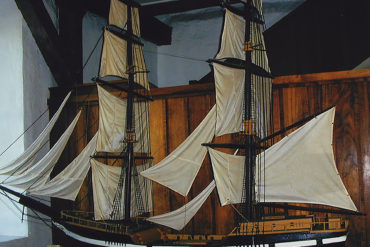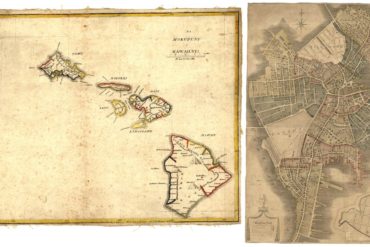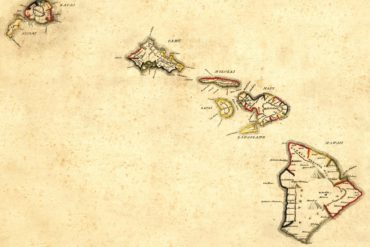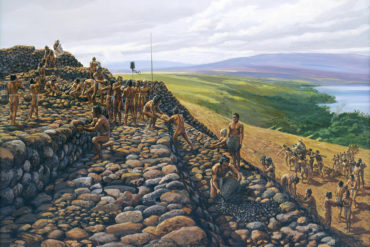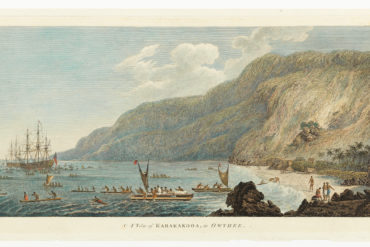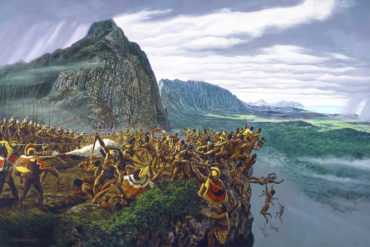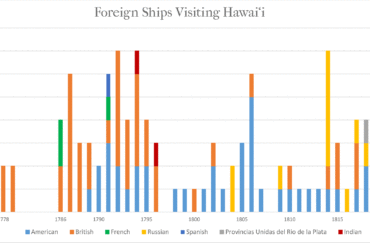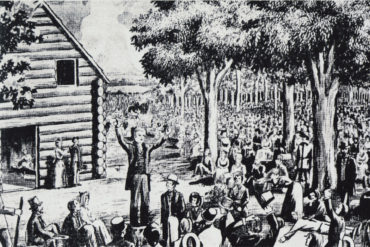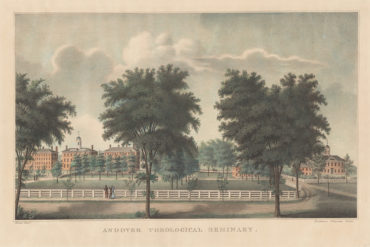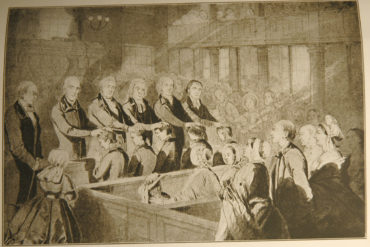On October 23, 1819, the fourteen men and women of the first company to Hawai‘i boarded the brig Thaddeus, anchored in Boston Harbor. They were joined by four Hawaiian men, three as members of the mission and a prince returning home to Kaua‘i.
This first exhibit of Eia Hawai‘i: 1819 – 1841 explores the events in Hawai‘i and New England before missionaries first arrived in Hawai‘i in 1820. Within a period of fifty years, Hawai‘i had experienced a dramatic transition from geographic isolation to playing a pivotal role as a provisioning stop for growing Western trade and colonial exploration, a shift that profoundly impacted the indigenous culture and practices of the islands.
Around 1,000 years ago, navigators from the Marquesas Islands launched an unprecedented voyage of discovery across the Pacific Ocean.
For Hawaiians, the natural environment was imbued with religious significance. Geological features, plants and animals were often revered as kinolau, or manifestations of the many gods. Religion pervaded people’s lives – from the maka‘āinana (commoners) to the highest ranks of ali‘i, who ruled as embodiments of the gods.
Captain James Cook was a British naval officer and explorer who commanded three voyages to the Pacific. Privately, he carried orders from the Admiralty to claim any “undiscovered” Pacific islands for Britain, with an eye to assessing the islands’ natural resources.
On October 23, 1819, a double-masted, 85-foot-long ship set sail from Boston Harbor, headed for the Sandwich Islands (Hawai‘i). in recognition of these events two hundred years ago, we take the opportunity to reflect on this complex history.
In 1786, trading ships began making regular stops in Hawai‘i on their way to China and the Pacific Northwest. Pursuing the lucrative fur trade, vessels from Great Britain, Spain and America found Hawai‘i an ideal place to restock provisions and replenish depleted crews with fresh Hawaiian sailors.
From 1790 – 1830, a Protestant revival called the Second Great Awakening swept across America. The movement was a reaction to the loosened social bonds brought on by the nation’s westward expansion and beginning industrialization.
For missionaries, education was essential to both salvation and worldliness. Prominent Congregationalist ministers, such as Timothy Dwight and Edward Dorr Griffin, led schools and churches that stood at the forefront of spiritual revival during the Second Great Awakening.
The American Board of Commissioners for Foreign Mission (ABCFM), founded in 1810, arose from the religious fervor that America experienced during the Second Great Awakening.

